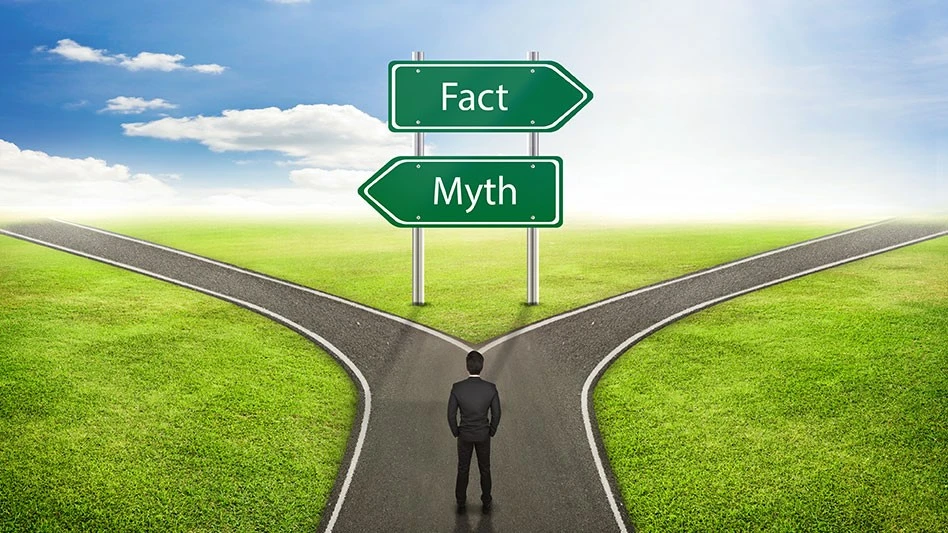As summer comes to a close, many of us can look back on vacations filled with road trips, adventures and landscapes of all sorts. While traveling just before the Labor Day holiday, albeit for work, I was greeted on an open highway in Minneapolis by a gigantic billboard emblazoned with, “Plastic Recycling is a Myth.” As someone who spends a significant portion of his time discussing the merits of recycling, having publicly testified as to the need to greatly expand recycling in America, I couldn’t help but take serious offense.
I might have expected such a "public" message to be underwritten by one of the usual suspects, such as Greenpeace, who use these types of claims to raise money off of the reactions to similar trendy catchphrases. It just so happened that this fictitious exclamation was provided by a private company trying to sell its products in reusable plastic containers.
Here's a catchphrase you’ll hear many in our industry use on a regular basis: We love plastic; we hate plastic waste. To that end, we applaud the reuse and recycling of all plastics. There is a reason the term ‘reuse’ is an important part of “reduce, reuse and recycle,” and we encourage people to reuse products whenever possible. But, simply telling people through the equivalent of highway tweets that recycling is “fake” is just downright environmentally irresponsible and, to do so to profit fiscally is unconscionable. It is an untruth that undermines the system. And so, this is where the road, or in this case the roadside, has taken the environmental discussion.
The plastics industry has invested billions of dollars into recycling technology in an effort to increase recycling rates with billions more announced. Getting recyclable materials to the right place is key to increasing the amount of materials we recycle overall. As a country, we were asleep at the wheel for far too long while we exported too much of our recyclables to foreign countries. During that time, we didn’t sufficiently modernize our recycling infrastructure to keep up with the incredible innovations in products and packaging. Now, we have to play catch up.
The great news is that we are recycling billions of pounds of plastic every year and that number is only going up. If you’d ever been inside an actual recycling plant and seen the process up close, you would realize the possibilities available if our society is willing to take the next step and recycle more. The bad news is that the No. 1 reason we don’t recycle is lack of recycling infrastructure: From receptacles to collection to sortation, we are limited in our ability to get material where it needs to go to be recycled. Working with other industries in the recycling stream, we need to make it easier for consumers to recycle and get more material to our recyclers and keep that valuable plastic in the economy instead of in a landfill.
Our friends over at the Association of Plastics Recyclers shared a report just a few weeks ago showing that recycling rates might not be as low as some would like you to believe. In the same report, APR estimates that plastic recycling supports more than 200,000 American jobs, which, doesn’t sound like a myth to me. An additional study, provided by the Environmental Protection Agency, found that in a single year, recycling and reuse activities in the United States accounted for 681,000 jobs and $37.8 billion in wages in addition to $5.5 billion in tax revenues. I’ve heard some tall tales, but I would argue that these statistics are not among them.
The assault on plastic recycling really has gotten out of hand. In fact, just a few years ago the activists who previously touted the necessity of recycling to address plastics litter in the environment and landfill diversion moved the proverbial goalposts just as new technologies were developed that hold the promise of unlocking access to previously difficult-to-recycle products. Effective solutions that achieve mutual environmental and economic goals took a back seat to hyperbole and enticing motivators. While the process of recycling plastic can, does and continues to work, the false claims and soundbites do not. Simply put, recycling is real and already has had a real impact on solving one of our most important environmental challenges.
American companies recycle 4.8 billion pounds of plastic every year—and we can do better. I have seen every step of the recycling process—trust me, it’s the real deal. We can recycle and must invest more in the infrastructure needed to make it easier for our communities to reach the recycling rates we are capable of. In many cases, the biggest impediment to recycling more material is simply getting it into the right receptacle after its use. Now, imagine yourself a consumer, finishing up a soda (That’s a “pop” in Minnesota.), and, upon recalling the billboard, you choose not to recycle, instead throwing your plastic in the trash and eventually, a landfill. How in the world is that helping?
If those who wish to dispel the essential value of recycling want to debate, let’s do so. Offer real, reasonable solutions and weigh in on the merits of “reduce, reuse and recycle” rather than espouse nefarious claims on a billboard. In the meantime, let’s stop suggesting that recycling is "a myth." Such baseless claims are only hurting the hundreds of thousands of Americans whose families are supported by the recycling industry and causing harm to our environment—Recycling is real.
Matt Seaholm is president and CEO of the Plastics Industry Association, Washington, the only association that supports the entire plastics supply chain, including recyclers.







